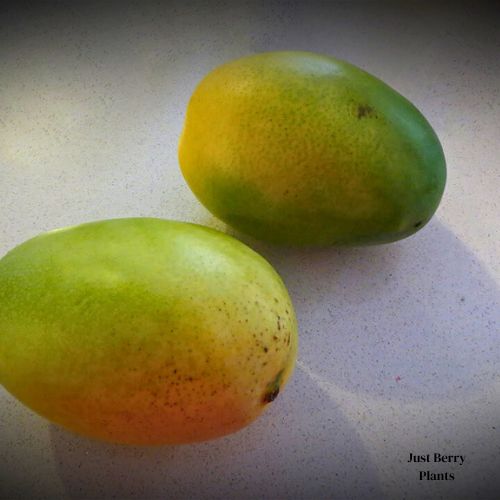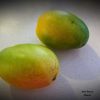Position
Mango trees prefer full sun exposure for optimal growth and fruit production. They should receive at least 6-8 hours of direct sunlight daily. Brook mangoes thrive in tropical and subtropical climates. They require a frost-free environment as they are sensitive to cold temperatures.
In cooler climates or where space is limited, the Brook mango, can be grown in large containers. Use a well-draining potting mix and ensure the container has drainage holes. Container-grown mangoes may need frequent watering and occasional pruning to manage their size.
Soil
Well-draining soil is essential to prevent waterlogging, which can lead to root rot. Sandy loam or loamy soils are ideal with a pH 5.5 to 7.5 (slightly acidic, add a bag of acid compost)
Water
Regularly watering during the growing season, ensuring the soil stays moist but not waterlogged. Once established, they are drought-tolerant but perform best with regular watering.
Fertilising
Use a balanced, slow-release fertiliser designed for fruit trees. Organic options like compost or well-aged manure can also be beneficial.
Fertilise in early spring as new growth begins and again in mid-summer. Alternatively, apply our slow-release (berry fertiliser) all-plant fertiliser. Apply one teaspoon every 4-5 months. The roots will absorb what they need.
Pests and Diseases
Mango trees can be susceptible to pests such as mango leafhoppers, mango seed weevils, and various fungal diseases like anthracnose.
We recommend Effective Microorganisms to prevent the spread of these pests and diseases. It is organic and more affordable than most other products.
Harvesting
Mango trees start producing fruit 3-5 years after planting, depending on growing conditions and care.
Fruiting usually occurs in late spring to summer, with harvests varying based on local climate and growing conditions.
Brook mangoes are harvested when mature and fully ripe. They should be firm yet yield slightly to gentle pressure when ripe. The skin colour and aroma are also indicators of ripeness.






